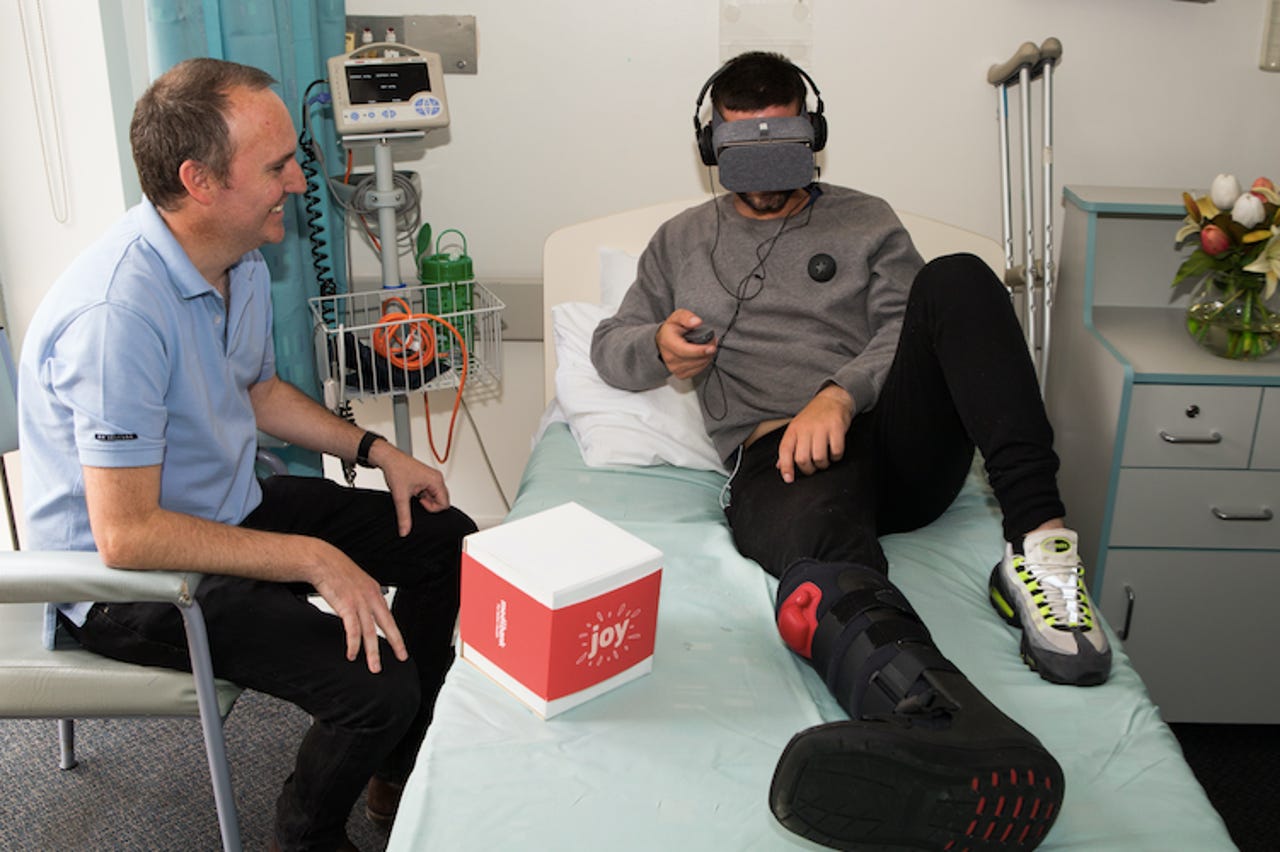Medibank launches VR for Australian hospitals on Google Daydream View


Australian health insurer Medibank has launched an immersive virtual reality (VR) experience for Australian hospitals on Google Daydream View, in collaboration with a group of neuropsychologists at Melbourne-based VR developers Liminal.
The "Joy" experience, which was entirely designed in 3D using Google's Tilt Brush, provides hospital patients with a virtual experience to attempt to relieve loneliness and isolation, particularly for long-stay patients with restricted mobility.
From their hospital bed, users are transported to a computer-generated setting in a natural Australian landscape, around a campfire with a group of people and a sleeping dog. They can then choose from a selection of stories to be read to them by the attendee within the experience.
Sami Yamin, a clinical neuropsychologist and neuroscientist who works as head of research at Liminal, told ZDNet that Medibank had conducted research regarding loneliness in Australia before reaching out to Liminal for help to develop a new virtual solution.
Latest Australian news
"Long-stay hospital patients often really suffer from loneliness and isolation because they're not necessarily able to access the community," he said. "It's sort of a growing problem within this specific context."
The Joy experience was designed specifically for less able users, such as long-stay patients with debilitating injuries, and requires limited movement or interaction. Yamin said that Google Daydream View was perfect for the project over something like Gear VR, which requires more control of the head-mounted display by the user.
"We really had to think about what was reasonable for long-stay hospital patients to be able to do ... something which was relatively passive but still gave the sense of community. So if someone had a spinal injury, and had had very little movement in their neck or below the neck, they'd still be able to enjoy the experience," Yamin said.
"Using the Google platform was really important to us because of the fact that it's the best mobile platform that's available at this point in time. The Pixel phone has an amazing resolution, it has a lot of the power of the corded devices.
"Portability was a really big issue for us, so having something that was tethered was not an option. Room-based tracking would have been far too hard to set up. [Google Daydream View] just kind of made sense to us."
Yamin added that although Daydream View's interactivity is a bit more limited than other VR devices, it wasn't a disadvantage given what Liminal was looking to achieve with Joy.
For the Joy experience, Liminal also encompassed several elements of neuroscience and neuropsychology to benefit the user on a deeper level. Rather than just a random setting, the elements that make up Joy's genereated environment were chosen based on both the psychological and physical effects they could have on the user, such as reducing anxiety, lowering blood pressure, and activating the parasympathetic nervous system.
"[A campfire] from an evolutionary psychology perspective is something which is really innate within the majority of cultures," Yamin said. "Historically, often campfires are where communities came to exchange stories. We know that natural environments are great for reducing depression and anxiety. We found research that suggested that fire was a really strong and powerful symbol of community and also looking at a fire has positive physiological effects.
"We wanted it to be familiar as well, not a completely removed situation. We wanted it to be sort of transportative, taking them out of their current four walls and taking them into another place, even if it's for a short period of time."
Medibank and Liminal are taking the Joy experience to around five or six hospitals this weekend before a nationwide rollout.
Yamin said virtual reality has practical applications for treating a number of psychological conditions, and helping with rehabilitation, exposure therapy, or specific phobias.
"In terms of being able to diagnose deficits in cognition or visual perception, in a 3D environment it's just far far better [for treatment than] the things we still rely on paper and pencil for, or 2D computer screens," he said.
Earlier this year, Victoria-based Build VR rolled out their Solis VR unit for Australian care homes, a Gear VR handset that features video scenarios that try to trigger positive emotions for dementia patients, even for those in the later stages who are often responsive to very little.
Marc Pascal, co-founder of Build VR, said that ideally the company wanted to customise a VR experience for those living with dementia. Potentially, personalised video content, such as a grandchild's birthday party, could be uploaded on the same day it happened, allowing less active patients to experience the event as if they're there.
"You could have, potentially, in the near future, an old man connecting with his grandson and doing a trip through his hometown together," Pascal said. "In terms of dementia, it's really about doing everything we can to bring back those memories."
In a slightly different take, Alzheimer's Australia Vic and Deakin University released a free app in September, allowing anyone with a smartphone and Google Cardboard to see through the eyes of a person living with dementia in an attempt to create empathy for those with the condition.